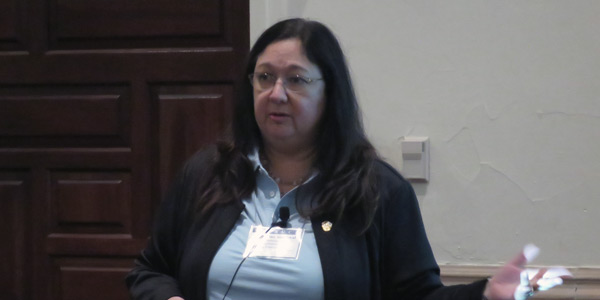By Robert Mullin
LA QUINTA, Calif. — While the loss of the San Onofre nuclear plant complicated California’s response to the closure of the Aliso Canyon natural gas storage facility last year, planners did benefit from actions taken in the wake of the plant’s 2013 shuttering, according to California Public Utilities Commissioner Catherine Sandoval.
“All of that work helped us to better withstand Aliso Canyon when the number one source of natural gas was no longer available,” Sandoval told an audience at the National Association of Regulatory Utility Commissioners’ 128th Annual Meeting.
In response to the shutdown of San Onofre — the largest generator in the state’s most populous area — officials ordered transmission upgrades, installation of synchronous condensers to facilitate the flow of electricity into the Los Angeles area and “a variety of things to help keep the system up and running electrically,” Sandoval said.
The loss of Aliso Canyon prompted the CPUC to authorize additional measures to shore up the region’s grid, including accelerated deployment of energy storage and expedited interconnection procedures. The state also stepped up implementation of demand response to shave summer electricity — and, by extension, natural gas — demand.
“This isn’t your father’s demand response; this is auto-DR,” Sandoval said. Among the most successful auto-DR programs: air-conditioner cycling, which allowed utility customers to select from a range of potential curtailments of their cooling units during periods of high electricity demand.
The program yielded 300 MW in DR, Sandoval said. “That’s a peaker plant. So we were able to get a negawatt peaker through auto-DR,” Sandoval said.
Southern California weathered the summer without incident on either the gas or electricity system. Now planners are turning their attention to winter, when heating requirements create a second peak for gas demand not driven by electricity generation. (See CAISO Seeks to Extend Aliso Canyon Gas Rules Through Winter.)
While Aliso Canyon owner Southern California Gas has been testing the storage facility for leaks, the CPUC still hasn’t authorized reopening. No set timetable has been established for bringing the facility back online.
“We really have to come up with new messages [for consumers] that are actually well-tailored to the winter side,” Sandoval said. “We have to think about what sorts of programs can we adopt to really ensure that there’s gas sufficiency so that we don’t run into problems, especially if we’re not able to bring Aliso back online.”





